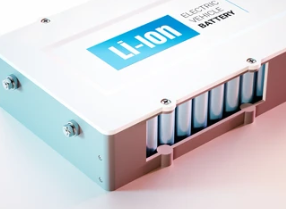





• access to a large pool of funds for research teams and startups
• well-established collaboration with many universities and research institutes globally
• strong connections with many industrial partners especially in the Chinese market
• fund for your research
• provide you with extensive market analysis
• commercialize your technology by forming a startup company or joint venture
• help you find research/business partners in both academia and industry
• provide resources for technology validation, product prototyping, pilot test, and getting user feedback
• help you find supply chain and customers
• provide support in securing further investments for your company
• If you need more resources to bring your technology to market --> BICI can fund your research
• If your technology is ready for market --> BICI can help you form a startup company to commercialize your technology
• If you are already a startup company --> BICI can form a joint venture in China with you to expand your market coverage
Research area
• In compliance with focus areas of BICI
Strength of innovation
• Strong technical advantage over current industry standards and competitors (supported by solid preliminary data or prototype)
• High technology barrier
• Patentable
Commercial potential
• Feasibility to translate invention into a product or service
• Addressing an unmet market need
• Clear market, large customer base
• No foreseeable obstacle in scale-up production
Project team
• Strong expertise and track record in proposed field of research
• Clear project goal with realistic approaches for translation
 Case Study
Case StudyClick to view the case study in a new tab
Background
BICI and one top public research university in the U.S. signed a partnership agreement on translational program. The goal is to develop lab inventions into commercial relevant prototypes, create spin-off companies or license technologies to industry.
Project selection phase
Prof G is a prolific inventor in his late 40s. After decades of high-quality publications, he is quite interested in advancing his innovations to products. When Prof. G and BICI staff met under the partnership framework, he presented four interesting technologies. Using previous industry experience, BICI staff was able to narrow the four proposals down to one based on application, market trend, maturity level, competition and mass production capability. After more in-depth analysis, BICI organized a meeting between Prof. G’s team and a technical team of a publicly traded company within BICI’s industrial network to further confirm the feasibility of the project as well as to set a list of targets. Eventually, BICI decided to fund the project with a one-year duration.
Project execution phase
During the first few months, not only did Prof G and his talented team further improve the technology, they were also able to come up with a set of performance data measured during tests. It was time to start the next step.
With its vast collaborator resource and friend network, BICI was able to send Prof G’s materials to a fortune 100 company and a startup in Silicon Valley for testing. The test result from the large company confirmed what had been observed in lab and showed advantage of our material over other existing ones. The startup, which then had been troubled by high raw material cost for a long time, was happy to see a low-cost solution with much better performance. In the meanwhile, Prof. G and BICI also paid visits to potential customers in China.
The next step is to form a company. Since Prof. G wants to keep doing research and teaching, both sides went out to look for an operation team. Together they screened many seasoned executives and young entrepreneurs. Eventually, a team out of Peking University (BICI was co-founded by PKU), stood out with their commitment and excellent execution. Besides an out-of-pocket investment of 10M RMB, this team also has established relationships with a long list of potential customers.
Through BICI’s network, the team made pitches to numerous VC firms and decided to accept a >25M RMB investment from a VC backed by 6 fortune 500 companies.
Company
Now the company is busy with delivering customer orders on a rented production facility in Guangdong province, China. BICI is helping to recruit high caliber engineers for the company and will help them to establish a R&D branch in the US. We couldn’t wait to see more success coming out of this wonderful collocation across countries, sectors and cultures.
• Initial meeting with BICI to introduce the technology and discuss project scope
• Conduct preliminary technology assessment and market analysis
• Present findings to applicant in a secondary meeting
• Sign NDA
• 2-3 rounds of meetings with BICI to refine proposal and address concerns
• Conduct extensive technology assessment and market analysis
• Work with applicant to draft a collaboration plan and project proposal
• Discuss with applicant or affiliated organization on collaboration and IP terms
• Provide supplementary information if necessary
• Present the project to BICI committee and investment board
• Receive funding and collaborative resources
• Direct funding to applicant
• Involve resources
The typical funding for each project ranges from 100k to 2M USD. The duration of the project usually ranges between 1-2 year, depending on the maturity of the technology.
We require a clear and targeted market application for the proposed technology. If the specific application is not readily known, BICI will conduct market due diligence to identify the market need.
